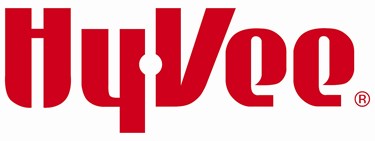As Hy-Vee Embraces Smaller Formats, Other Supermarkets May Follow
By Hannah Ash, contributing writer

Bigger May Not Always Be Better When It Comes To Dollars And Cents
Throughout the 80s, 90s, and beyond, there was a small frenzy for most retailers — who could open the biggest store first? There was a whole sea of undiscovered retail space just perfect for the newest supersized center to call home. The tides, it seems, are changing. As leading retailers Walmart and Target Corp. begin to scale back and reevaluate the size of the stores they are opening, others are following suit. Staples, for instance, is closing a large amount of their North American stores and limiting the products it does keep on shelves. Large supermarket chain, Hy-Vee seems to be taking a cue from the giants by scaling back the sizes of the markets it is opening and paying close attention to each new location it selects.
On Tuesday, Hy-Vee opened its first ground-up neighborhood market concept store in Sioux City, Iowa. The mainstreet concept, Hy-Vee Mainstreet, wants to insert itself in a location where shoppers are out and about — largely walking — on a daily basis. To fit a large product offering into a small space, Hy-Vee needed to limit its varieties and products to those that are most relevant. The typical Hy-Vee store concept is anywhere between 70,000 and 80,000 square feet; Hy-Vee Mainstreets hover around 14,000 square feet. "In one of [the larger] stores, we may have 40 kinds of hamburger helper, [in the smaller stores] we have ten. Or, instead of having four different types and styles of bananas, we have two. We have pretty much everything those stores have, but we don't have as many varieties,” explains Tim Stupka, Assistant Vice President of Operations for Hy-Vee’s northern district.
While retailers across the board, from Kohl’s to Target to Walmart, begin to downsize their floorspace needs, omni-channel is partially responsible. As more and more shoppers browse online before picking up in-store, less showroom space is required. Streamlined check-out processes and mobile payments all help cut the functions the supercenter stores were once known for. Streamlining products and entering into more relevant locations is a strategy that seems to make sense. On its new smaller-format stores, Bill Simon, President U.S. Walmart, stated previously, “They compete really well against multiple channels.” As Walmart continues to set the pace for other retailers to follow, Carol Spieckerman, CEO of NewMarketBuilders, comments, “Given Wal-Mart’s highly-developed supply chain, particularly in fresh (food), it will go in with a huge advantage. This is particularly true as convenience stores evolve from selling beef jerky, cigarettes, and hot dogs on metal rollers into destinations for healthy snacks and meal occasions.” In the supermarket business, Hy-Vee may be an early adopter of a trend that could soon make waves — smaller format Sprouts Farmers Market (boasting a limited inventory) has been cited as one of the country’s fastest growing retailers.
